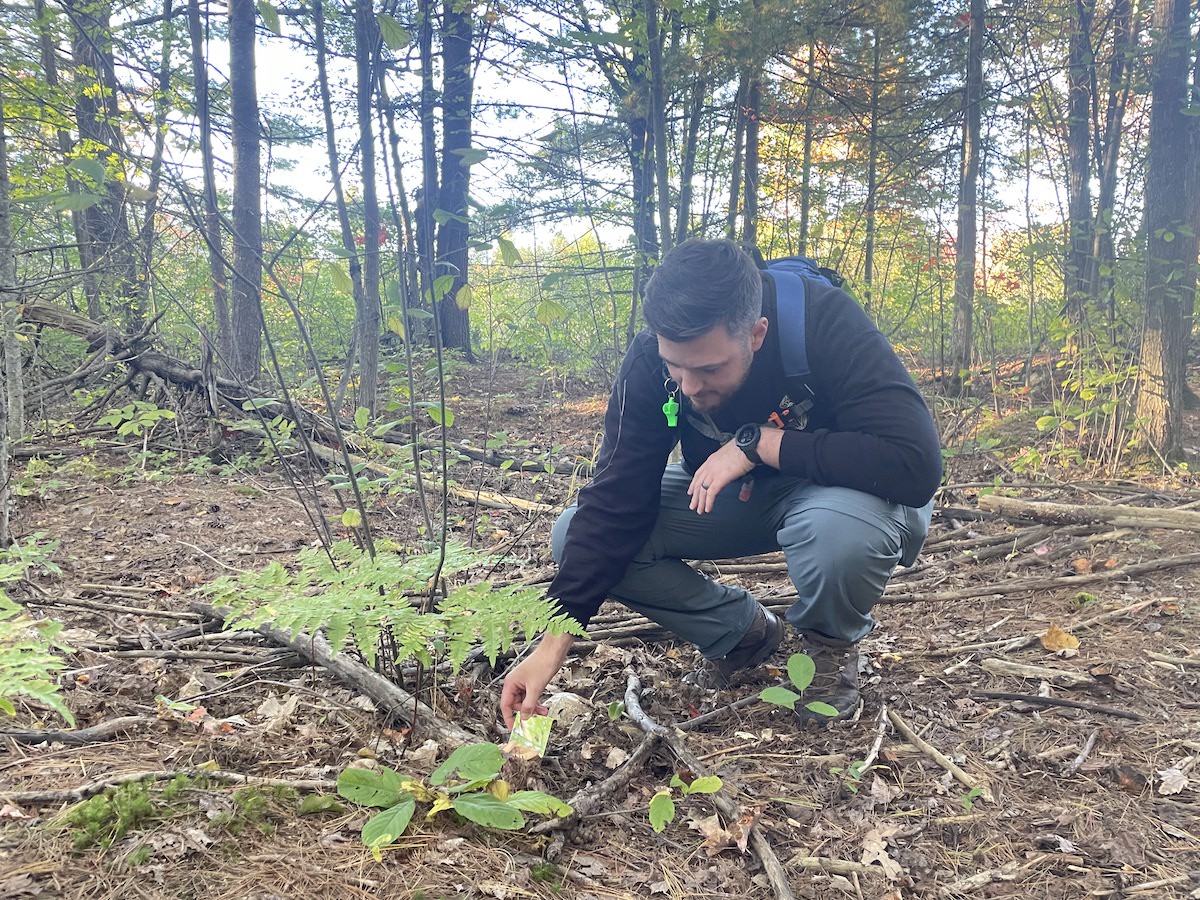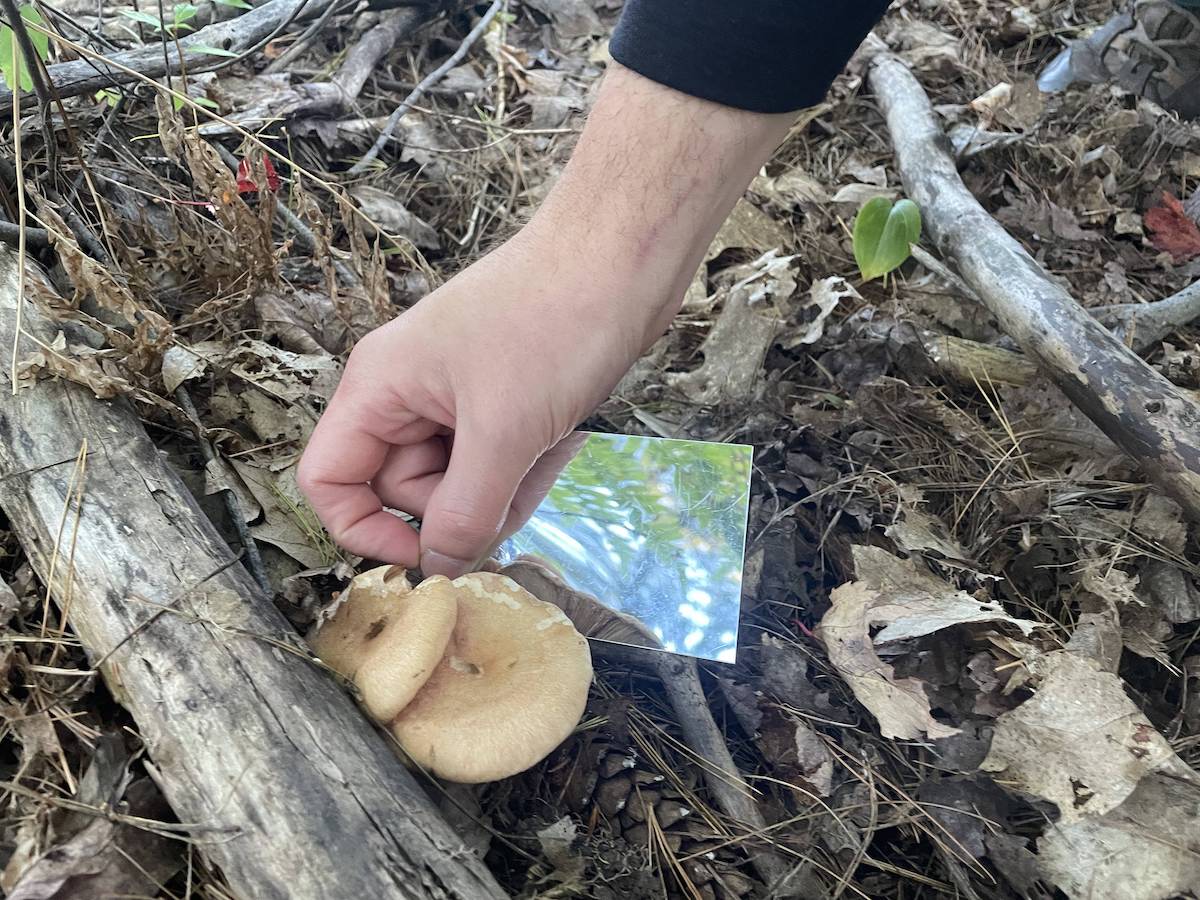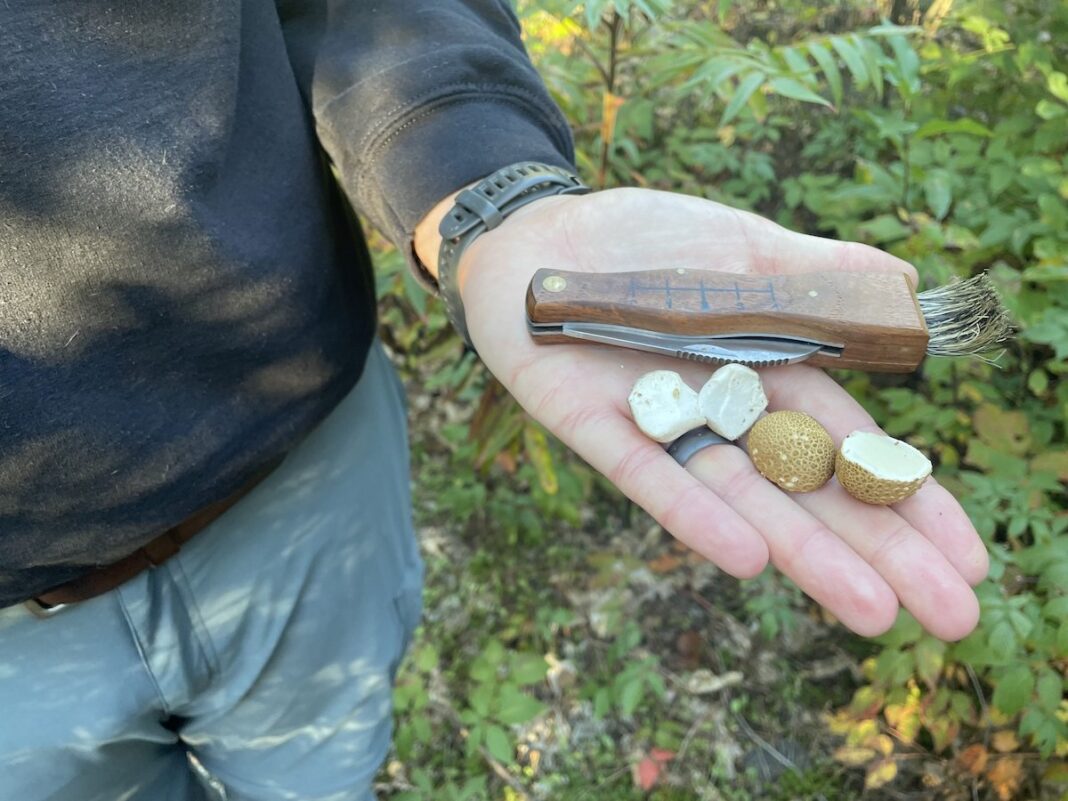Bordering the forest that surrounds Robert Courteau’s cottage an hour outside of Ottawa is a patch of golden yellow chanterelles. During the summer, he plucks the wild mushrooms from the ground and admires the distinct forked ridges that extend from their stems up to the underside of their funnel-shaped caps to their butt ends.
When he brings the mildly nutty, apricot-smelling treats into his kitchen, he grills them with a bit of olive oil and a pinch of salt, and offers some to his mother.
“Don’t touch the mushrooms. They’ll kill you,” she warns him every year.
Courteau, formerly a chef in the Czech Republic, is president of the Ottawa Mycological Society and founder of Think Fungi, a non-profit organization committed to fungus conservation through public education.
Nearly every day for the past twelve years, Courteau has ventured into the wilderness to learn more about the largely unexplored and microscopic world of fungi. Recently, he requested the support of amateur observers and foragers in documenting all fungi species across the continent in the Great North American FungiQuest.
The initiative, which ran from Sept. 15 to Oct. 15 this year, was the largest citizen science effort ever made to record North America’s fungi species. Its goal was to create a comprehensive map of where fungi species are located to improve society’s understanding of the world’s fungal landscape.
The project’s initial goal was to record 50,000 observations. But to Courteau’s surprise, by day eight, FungiQuest surpassed that goal and received over 148,000 observations.
Scott Redhead, curator of the Canadian National Mycological Herbarium, said FungiQuest was an ambitious project. But, he added, the public awareness it raised surrounding fungi will have a lot of benefits.
“Citizen science has many more eyes in the field than, let’s say, a professionally trained mycologist who can only be in one place at one time,” he said. “Fungi pop up seasonally and sometimes a bit randomly in different locations, and many eyes will see many more specimens than one person could in their entire lifetime.”
FungiQuest has received a variety of observations, such as hare’s ear fungus from Alaska and gloeophyllum sepiarium, a wood decay fungus, in Mexico.

“[Mycology] is probably one of the only spots in the world of science where … anyone from the public can essentially get out and contribute a lot of information to the field of study,” Courteau said. “Fungi are where it’s at because there are still so many species to discover.”
Amateur observers can be key in conducting discovery-based research about fungi, Redhead said. There are amateurs that have collected many rare fungi, he explained, and they have even alerted scientists to new species, helping advance research.
From biofuel to bustier, fungi do it all
Courteau is not alone in his enthusiasm for the world of mycology. Linda Horianopoulos, a postdoctoral research fellow at the University of Wisconsin, shares Courteau’s passion for fungi in her research on yeast biodiversity. Through her work with the Wisconsin Energy Institute, Horianopoulos hopes to produce biofuels using yeast: an efficient ethanol producer and the world’s most common liquid biofuel.
“We’re looking at all of these different DNA sequences and finding genes that make these valuable bio products,” Horianopoulos said. “We’re just kind of scratching the surface of all of the different things that can be produced by fungi.”
Beyond biofuel, fungi are also being explored as the ultimate sustainable material. Last year, designer Stella McCartney unveiled a sustainable clothing set made from “mushroom leather.” It featured a black “leather” bustier top and matching pants. This year the luxury brand debuted its first ever mushroom “leather” bag.
MycoWorks, a California-based biotech company, developed the new, eco-friendly, vegan “leather” made from fungi and used by McCartney. Their innovative use of mycelium—threads from the root structure of mushrooms—has garnered interest and investments from a number of big brands including Adidas, Lululemon and Hermès. Currently, the carbon-neutral fungi-based leather is only available as a luxury item.
“There is a lot of potential to create more sustainable products using fungi,” Horianopoulos said. “Hopefully they will be useful in the future and kind of mitigate some of the problems from a petroleum based production pipeline.”
However, Courteau said the untapped potential of fungi is threatened by its lack of explicit legal protections in global conservation efforts.
In the 1960s, ecologist Robert Whittaker expressed the need to separate fungi from flora because they make up a completely unique kingdom. Organizations such as the Society for the Protection of Underground Networks (SPUN), a scientific research organization, are working to protect this underexplored kingdom by advocating for its natural capability to connect ecosystems through its underground networks.
To do this, SPUN is creating open data platforms and building diverse networks of researchers and local communities. Alongside SPUN, Horianopoulos said The Canadian Fungal Research Network is also working to coordinate activities between mycologists across the country and increase knowledge exchange.
However, while policymakers and biodiversity organizations agree that fungi are vital for ecosystems to thrive, few have taken steps to explicitly include them in their policy frameworks.

“If [we] pay attention to fungi, we’re paying attention to the entire ecosystem,” he said. “You can protect a tree without protecting a mushroom. You can’t protect a mushroom without protecting a tree.”
Scratching the surface
While the field of mycology is vital for humanity, it remains underfunded, Courteau said as he pulled a small mirror from his pocket. He crouched down, angling the mirror to see the spongy underside of a dark red painted botele on the Crazy Horse Trail, a backcountry path in Ottawa.
The late-afternoon sun peeked through the canopy of trees slowly shedding their bright summery green for fall’s fiery shades of yellow, red and gold. The air was heavy with the smell of rain, earth and pine. Fallen leaves crunched underfoot and hidden away, an owl’s “hoot” bid adieu to the slowly setting sun.
Courteau shrugged his backpack off his shoulders while swatting a mosquito away from his face and pulled out one of two field guides. Fauna, his one-year-old dog, tried sticking her head into the backpack to steal a treat before quickly giving up and sprinting after a squirrel, tongue wagging. The inside of the field guide is heavily annotated as if Courteau uses it like a bingo card.
“Mushroom hunting is a game,” he said as he explained the difference between gilled mushrooms and species with pores. He plucked an old russula with brittle gills attached directly to its stem and a tiny slug nibbling away at its yellow flesh.
Suddenly, for a moment, Courteau froze in his tracks and slowly pointed to a hawk flying between branches and carrying a mouse in its talons. As the hawk glided away and Courteau forgot about the distraction, he began to explain how researchers in Tokyo have proven that slime mould fungi could help urban planners with road system design because of its efficient growing methods.
Turkey tail mushrooms, commonly found in forests across North America, can help the body process chemotherapy more efficiently, and psilocybin or “magic mushrooms” have been proven to help treat post-traumatic stress disorder. The capabilities of these fungi only scratch the surface of how “fungi can save the world,” according to Courteau.
Courteau said he hopes FungiQuest will become a vital database of information for researchers and raise public awareness of fungi’s ability to sustain ecosystems. He explained that we can only understand the potential of the fungi kingdom if there is a real public interest in the field to do more DNA sequencing.
“I think the future is fungi,” he said. “Fungi can solve pretty much all of our problems.”
Featured image by Wafa El-Rayes.






